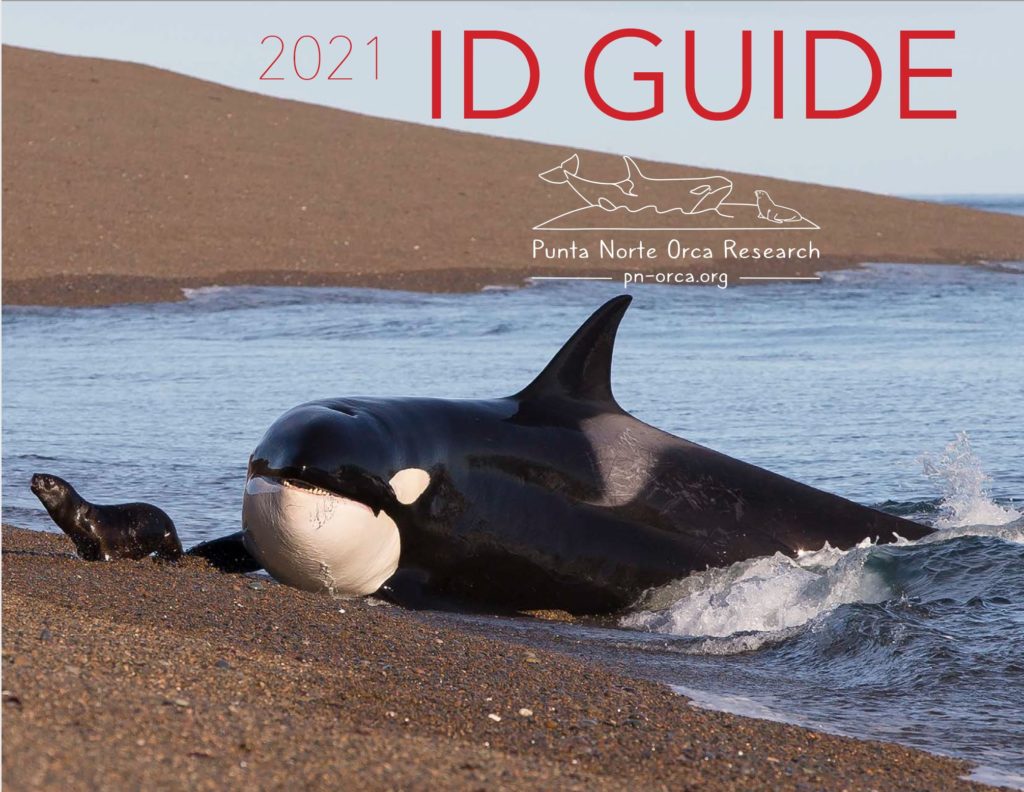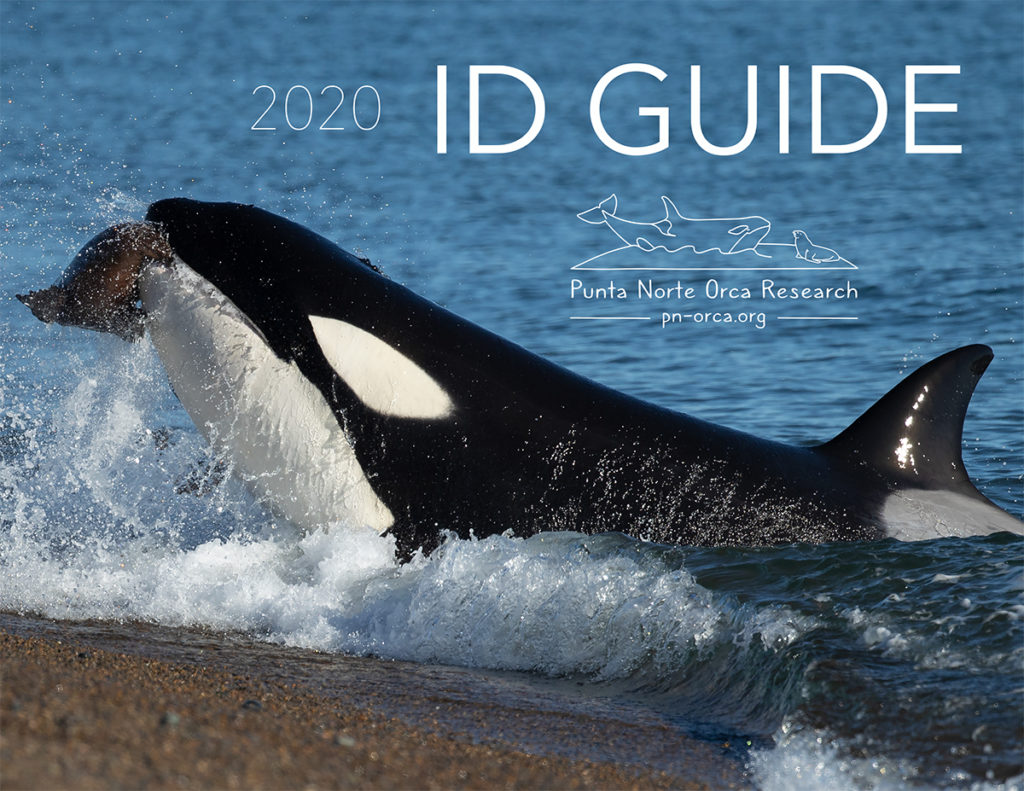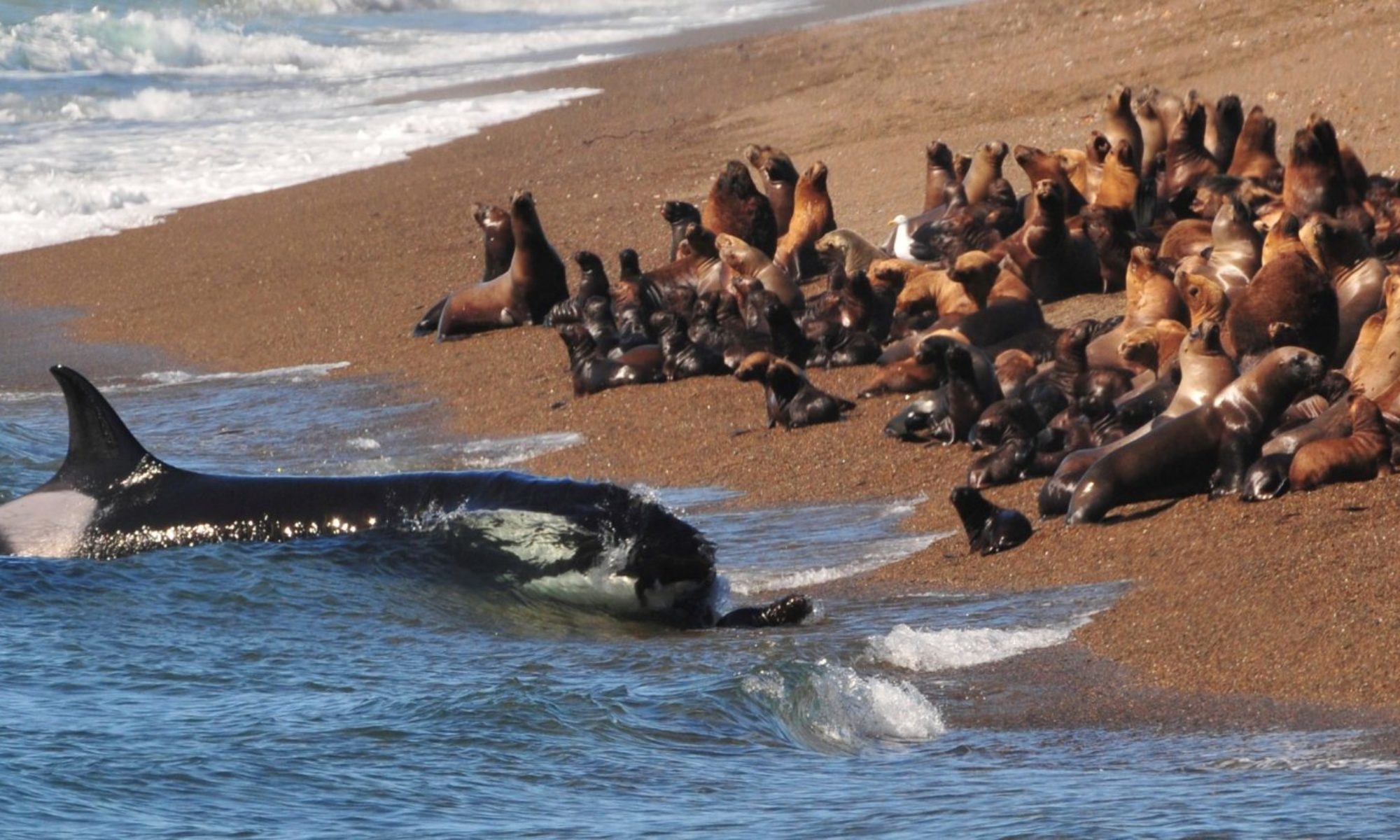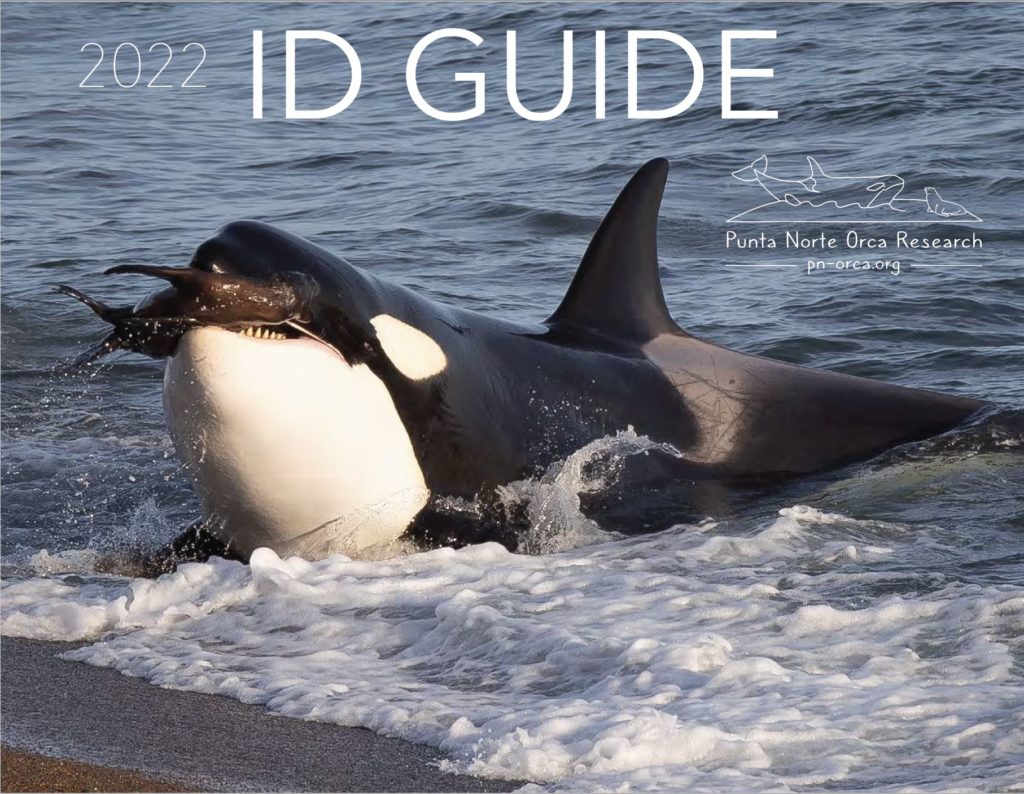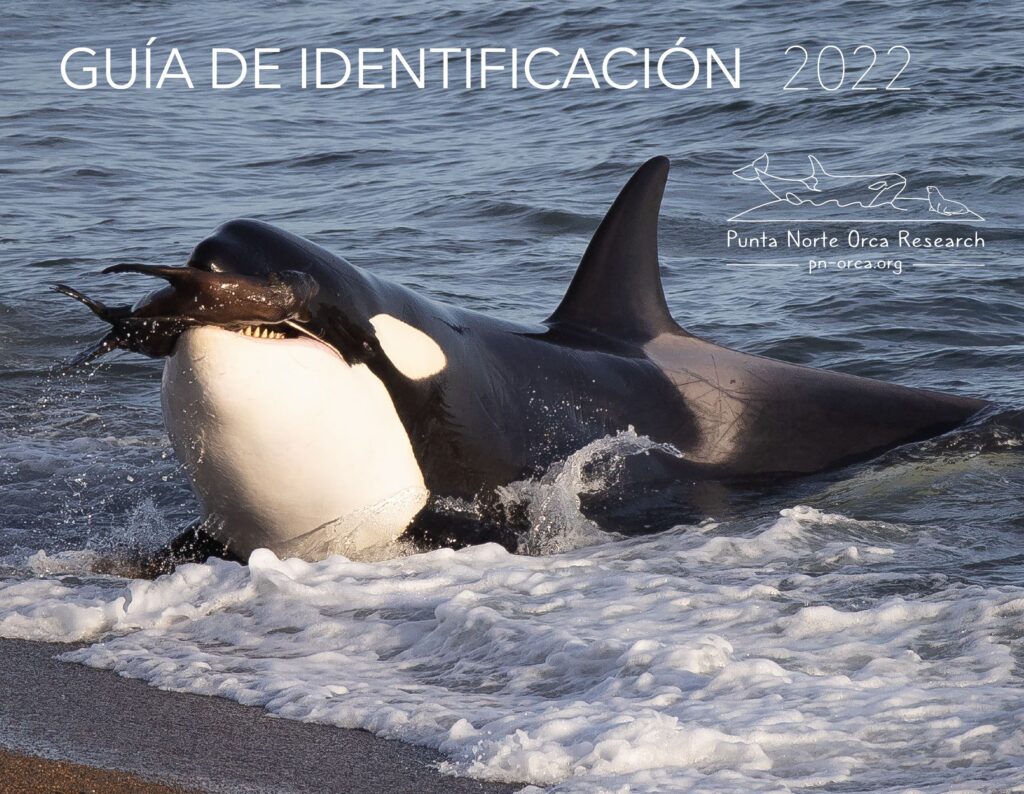Identification Guide
Each season the researchers of PNOR photograph the orca who visit the shores of Punta Norte. These photographs are then used to confirm who is present as well as any new individuals who may arrive (or who are born into the groups). Each orca can be identified by a range of features, such as the size and shape of the dorsal fin, scars, notches etc that may have acquired. These can change over time. Additionally, each orca has unique pigmentation – sometimes very subtle aspects such as a ‘freckle’ or the defining line of a part of the white, black or grey pigmentation, other times very distinctive features can be seen (like a very narrow saddle patch).
Photographs are therefore used to identify each orca and this is termed Photo ID.
It is not as easy as it looks, and requires patience and practice; however, although it might be time consuming for us, it can yield remarkable data such as longevity and social networks. Photo-ID is less disturbing to the animals than using tags.
Our ID Guide contains information on the group structures, the last known sighting of an individual and, where known, their year of birth and their sex. We also note who intentionally strands to capture sealions.
If you have photos or video of orca around South America (including at Península Valdés) please contact us via our facebook page. You may have a photo that would help us know where these orca go when they are not at Punta Norte.
![]() click on the icon to go to our facebook page to REPORT A SIGHTING and on the photo below to DOWNLOAD the 2023 ID Guide (in Español and English). Please note these are low resolution guides. The HIGH resolution versions links are below each image.
click on the icon to go to our facebook page to REPORT A SIGHTING and on the photo below to DOWNLOAD the 2023 ID Guide (in Español and English). Please note these are low resolution guides. The HIGH resolution versions links are below each image.
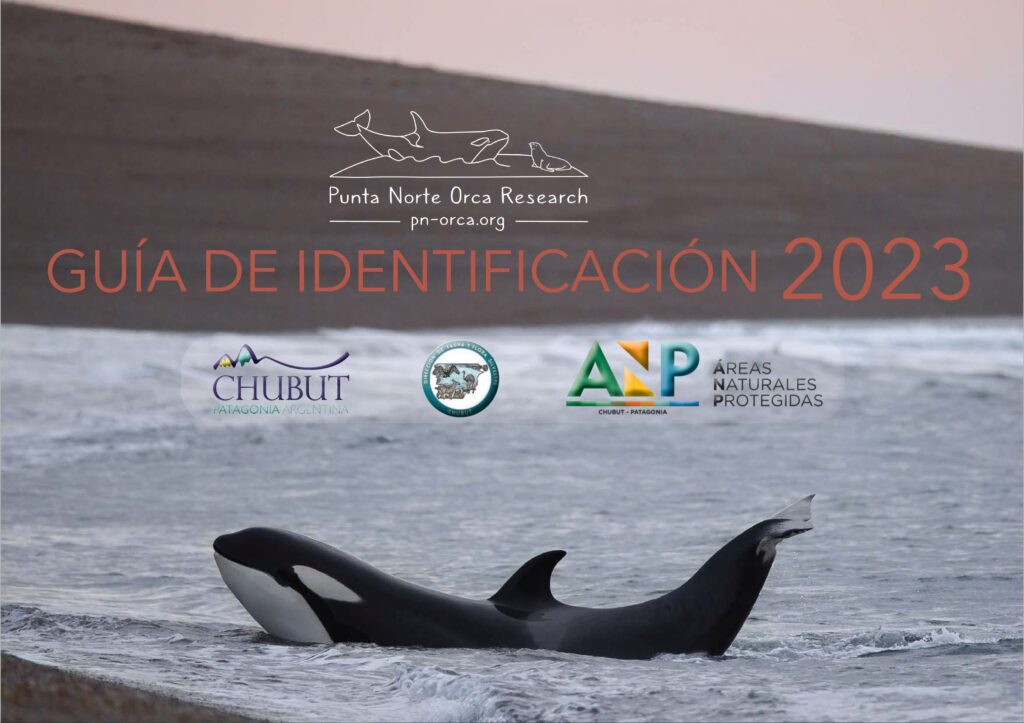
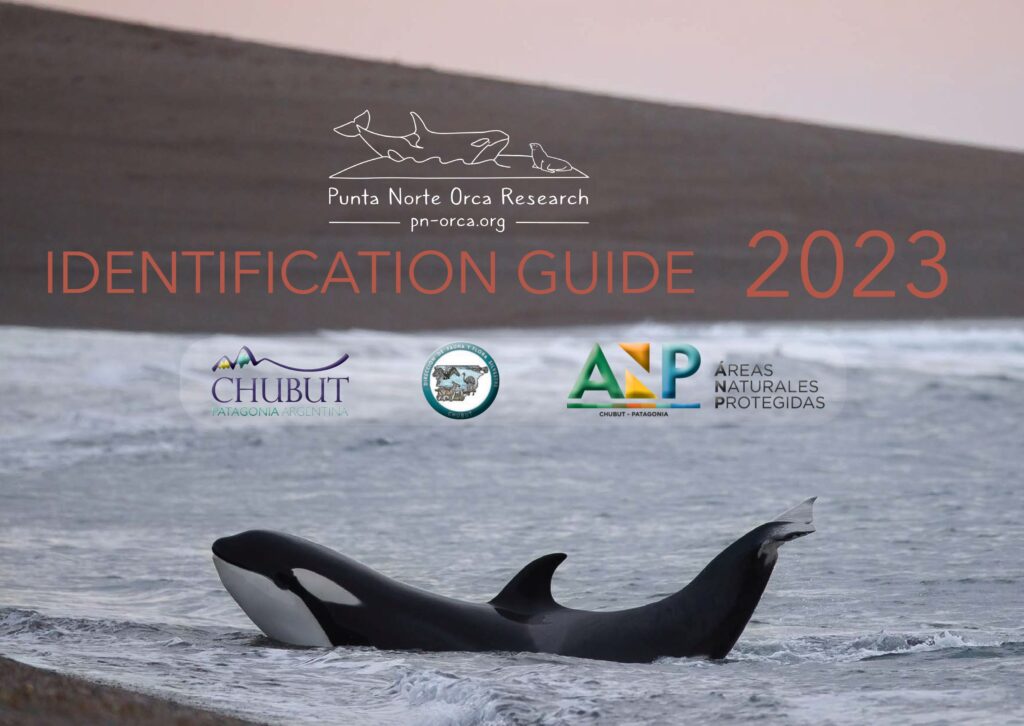
Previous Identification Guides
To provide historical perspective, we have included the PNOR ID Guides from the previous three seasons.
2022 ID Guide, avaliable in both English and Spanish
The ID Guide 2022 is available in English. Click on the photo or the link 2022 ID Guide.
La Guia de Identificación 2022 también se encuentra disponible en Español. Haga click en la foto o en este link 2022 GUIA ID.
